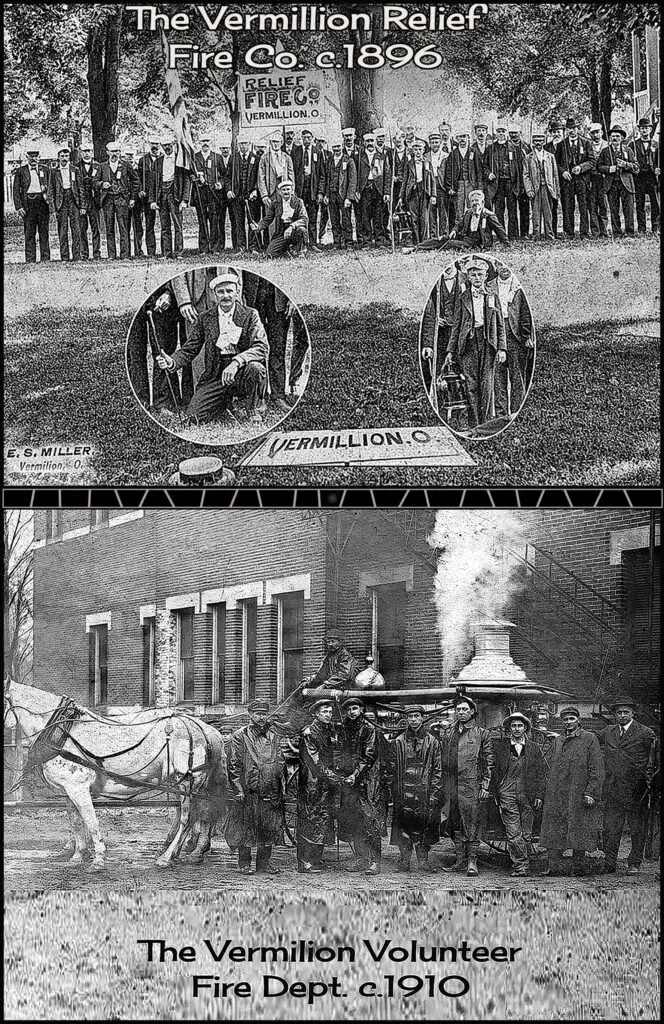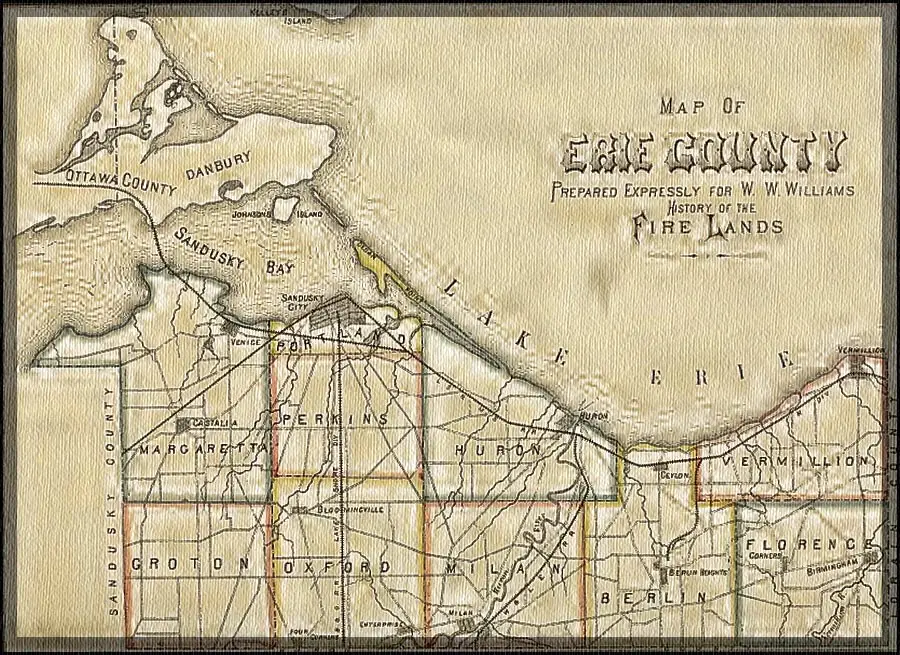“You can sometimes talk to crazy. But there’s no dealing with stupid.” -Anon.
ZOOMING IN ON THINGS

DESKTALK: Very few persons visited the museum this past week. As a result it afforded me time to learn more about microphones, video-making, and photo-processing. I’m not diverging – moving away – from historical matters. Just attempting to develop skills that will make presentations of them better.
The mics interest me because I have acquired a new piece of hardware (pictured) that allows more control over processing, editing, and affecting audio / sounds. I have noticed that ageing has changed my voice some – and hearing it clearly helps me adjust.
I also like using, and trying to perfect, AI voiceovers. There are all types of software available. But using it to make voices sound plausibly real is not a given. It often requires nearly as much thought and skill as writing a reasonably good script / story. And no matter how people feel about it, AI voicing is here to stay.
Thus, acquiring an operational skill pertaining to its use is – at least from my perspective – well worth the time spent learning the proverbial ropes. Knowledge of punctuation and literation are requisites. But not in a traditional sense. They may not, at times, be applied according to the traditional rules of writing in English; those we all know, hate, and constantly break. Speech-a-fying ain’t like that.
As an English major in college I once had the great misfortune of taking a class in linguistics which I promptly quit attending and just as promptly failed.
But I didn’t walk away empty-handed or empty-headed. Sounds are important.
I was not infatuated so much with the way sounds are formed but was more interested in the sounds made. (i.e. I spent hours looking in a mirror at my lips as I made various sounds – ergo, the reason I abandoned the class.)
People do not always pronounce words the way they are written.
I know that’s not news. But it’s also not something we think about when we are speaking or writing. In writing – depending on the intention of what we are wring – we normally follow “the rules”. But speech is different. So writing “for an AI voice requires that one occasionally write words that will make the AI voice pronounce a sound most persons are familiar with.
For example the word Ceylon is vocalized as “sah-lon” by an AI voice. It’s a reasonable interpretation. But locally (around Vermilion at least) many folks would say “see-lon”- as in Ceylon Junction. That is a rather simple illustration of the point I’m making. But it can and often does become more complex. And it takes time to get things right.
With me, it’s my infatuation with the technology that keeps me awake and alive. It’s kind’a like living in a dream. Who could ask for more?

A VERY RICH COMMENTARY

BLAH…BLAH, BLAH: Apparently the speed bump near the new outhouse at Main Street Beach isn’t working. Folks just drive around it. My unsolicited advice? Plant a tree.
Name it after me. (Make it a weeping willow.)


THOSE WACKY AUTOISTS
This week -A 1916 Editorial re: the emergence of horseless carriages in Vermilion and elsewhere.


WHAT’S IN A PRAYER reverend Lou is gone / only then / (not now). / his words / remain / there / there / and there. / especially when prayers are said / they return. / not prayer words / but the ones that mean them. / the stars / over our heads / say them too / as they are / forever / intended. January 4, 2024
VERMILION HISTORY THEATRE: Due to all the distractions surrounding me lately I neglected to keep the link to the History Audio/ Video Theatre. So – click on the name above and visit.
Stumbling Through Vermilion History

While stumbling through the local history of our community I am inclined to make mistakes now and then. Given the fact that few to none of them are what one might consider to be “earth-shattering” it’s not much of a problem. There is room for some error. However, while on the subject of mistakes I note that there is at least one organization in our community that through the years seldom made mistakes because the result would be devastating. That organization is the Vermilion Volunteer Fire Department.
As local organizations go it is undoubtedly one of, if not “the” oldest volunteer safety organizations in the city. Although, to my knowledge, no records exist to document that as a fact it would likely be safe (no pun intended) to assume that a loosely organized force of volunteer firemen probably existed for some time prior to Vermilion’s official incorporation as a village in 1837.
Formally organized as the Relief Fire Company #4 in the mid 19th century (top photo) it was reorganized and was renamed the Vermilion Volunteer Fire Company (lower photo) at the dawn of the 20th century.
By 1910 when Vermilion News Editor/Publisher Pearl Roscoe froze the lower image of Vermilion fire-fighters at the back of the Vermilion Township Hall they had come a long, long way from the bucket brigades and hand-pumpers of their fathers and grandfathers. Their steam-fired fire pumper was a state-of-the-art machine. And it is clear that the men were truly proud of the apparatus.
Prior to the time water became readily available throughout the village the fire pumpers were placed near a good water source – such as the river – where they were used to pump water through lengths of hose to the fire. The hand-pumper, as the name implies, required as many as 10 men to operate. Thus, the advantages of the steam pumper over its immediate predecessor is appreciable.
And Vermilion did have its fires. In the years of 1875, 1891, and 1903 many of the stores and shops located along the southwest side of Liberty and Division/Main Streets were visited and destroyed by flames. In 1910 twenty-two cottages in Linwood Park went up in smoke. So frequent were the mishaps that after the 1903 fire a small headline in the old Erie County Recorder placidly observed “Vermilion Burns Again”.
In truth – although they were catastrophic – there was nothing extremely unusual about these conflagrations. A majority of buildings were located close together, constructed of wood, were heated by coal/wood stoves, and were illuminated by kerosene lamps. Put all those things together, mix in the human error factor, and the potential for disaster becomes, and became, very real. Fortunately, no lives were lost, and no one was injured as a result.
Although the steam pumper greatly improved the ability of Vermilion fire-fighters to address many of the fires they encountered it was hardly a match (again no pun intended) for fires such as the 1910 fire at Linwood Park. In this case two additional steam pumpers, and hose carts, manned by Lorain firemen arrived on flatcars furnished by the Lake Shore Electric interurban railway. Nonetheless, the old steam pumper more than proved its worth over the years – as did the numerous volunteer firemen who manned it.
Then in 1928, after 20 years of very commendable service, a new age dawned, and the old steam pumper was mothballed. The Vermilion Volunteer Fire Department, under the direction of Fire Chief William “Dad” Tischer, leapt into the new century with both feet and purchased a newfangled (gasoline engine powered) firetruck. It was not a mistake.
Ref: Vermilion Bugle – 1981, History of Vermilion Fire Department, by John Fischer; The Vermilion Historical Society (formerly the Vermilion Area Archival Society), Pearl Roscoe Photo Collection; VPJ 04/22/07.
© RNT – April 14, 2024
![]()
the history of erie county in ohio (Continued)

457ec…Money was a minus quantity. Dollars and cents did not estimate the value of people and their surroundings as at present, and when small change was needed a silver dollar was cut into four or more pieces, and this was usually done in such a manner as to add twenty-five per cent to its real value.
The post-office was at Cleveland, and all mails for the fire-lands were received here, until a route was established between Cleveland and Detroit, which was to pass through -Groton and vicinity. John Paxton carried the mail in 1814.
The first physician was Dr. W. Hastings, who commenced practicing in the early part of 1810. After the War of 1812 he moved to Knox County, Ohio, where he was elected member of the Legislature. He returned to Groton with his family in 1815. His wife died in 1848, and their descendants still reside in the country. They had eight children, all sons. Ephraim removed to Sandusky County in 1825, where his son, W. G. Hastings, was for many years engaged in business in Parkertown, but now resides in Sandusky city. Ephraim continued to reside in Groton. The rest of the family are scattered all over—some in California, and one when last heard from was in Australia. The doctor continued to practice until his death in 1864, at the ripe age of eighty-nine years. He practiced forty years in the family of Seth Harrington.
The first magistrate was elected in 1816, and as Squire Richey, has lived in history in connection with a story told of a young couple he met (while riding over the prairie), who were going to his house to be married. He dismounted, and on the broad prairie, with heaven’s blue above them, proceeded to unite them in the holy bonds of wedlock.
The first school was taught by Elijah Fleming in 1818 and was supported by subscriptions that amounted to fourteen dollars a month, and the school was supported by the prominent families of the township, viz., the Paxtons, Magills, Harringtons and others. This school was a mere hint of what the future decades would do on educational lines, and the pretty brick schoolhouses now found every few miles, show that the prophecy has been more than realized. There is nothing of which Ohio has juster cause for pride than her school buildings and educational laws.
The farms of Groton are surpassed by none in other townships. Large, finely cultivated, well fenced, and stocked with good cattle, the owners have homes they are justly proud of. Among those whose names deserve a place in the history of Groton, are the early settlers Amos McClouth, Samuel Bemiss, Charles Rash and Worthington Nims.
Amos McClouth came into the township in 1817, with three other families. They came from the beautiful Berkshire hills of Massachusetts and must have found in the level landscape of Ohio, and the russet colors of her forests in autumn a great contrast to the gorgeous scenery they left behind. Mr. McClouth, however, remained in his new home, and out of a family of ten child…
HISTORY OF ERIE COUNTY OHIO – With Illustrations and Biographical Sketches of Some of Its Prominent Men and Pioneers – Edited by Lewis Cass Aldrich – Syracuse N.Y. – D. Mason & Co., Publishers – 1889

